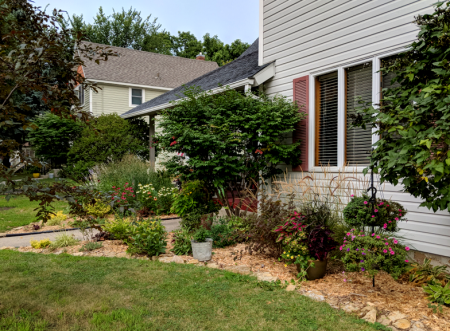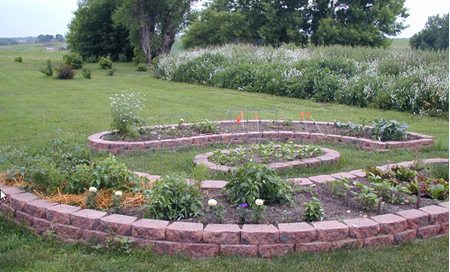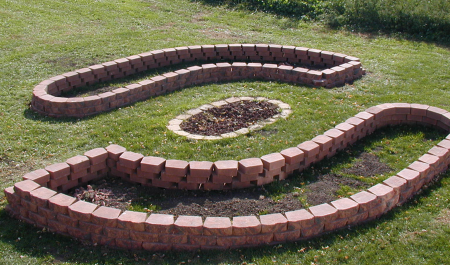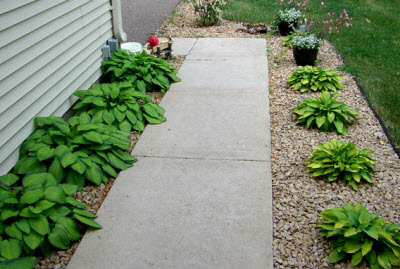Click below to listen to my 2 min. Garden Bite radio show: What is a microclimate?
Audio PlayerI mentioned having a microclimate in your landscape last week when I talked about a zone 5 plant. However, what exactly IS a microclimate?
It is a small area that’s different from the rest… makes sense!
The area may be as small as a part of your yard or as large as a city. For instance, in my yard, the west side next to my home is a microclimate due to heat from my home and the sun.

Trees, stone, pavement, create microclimates. Other buildings, like your next door neighbor’s house or fence will create a microclimate due to shading.


The point of the above photo is the raised bed – it’s own microclimate for two reasons. One, it’s raised and two, the stone.
If you live on a lake, your landscape will cool off and warm up more slowly. If you live on the top of a hill, it’s likely a lot windier. All of those things are something to take into account when selecting plants.

You can also create microclimates. For warmer soil more quickly, build a raised garden bed or a berm.


That windy area of your yard will change if you plant a windbreak! Rocks absorb heat. You can create a microclimate with boulders or large stone.

OR you could remove rock that someone put around your house that is killing your plants by too much heat! Most of you know I’m not a fan of rock used as mulch!

Fountains and other water features create microclimates, raising the humidity and temperature.

On the other hand, low lying, damp areas of your yard that has no air circulation can collect cold air.
And more Today’s Homeowner
